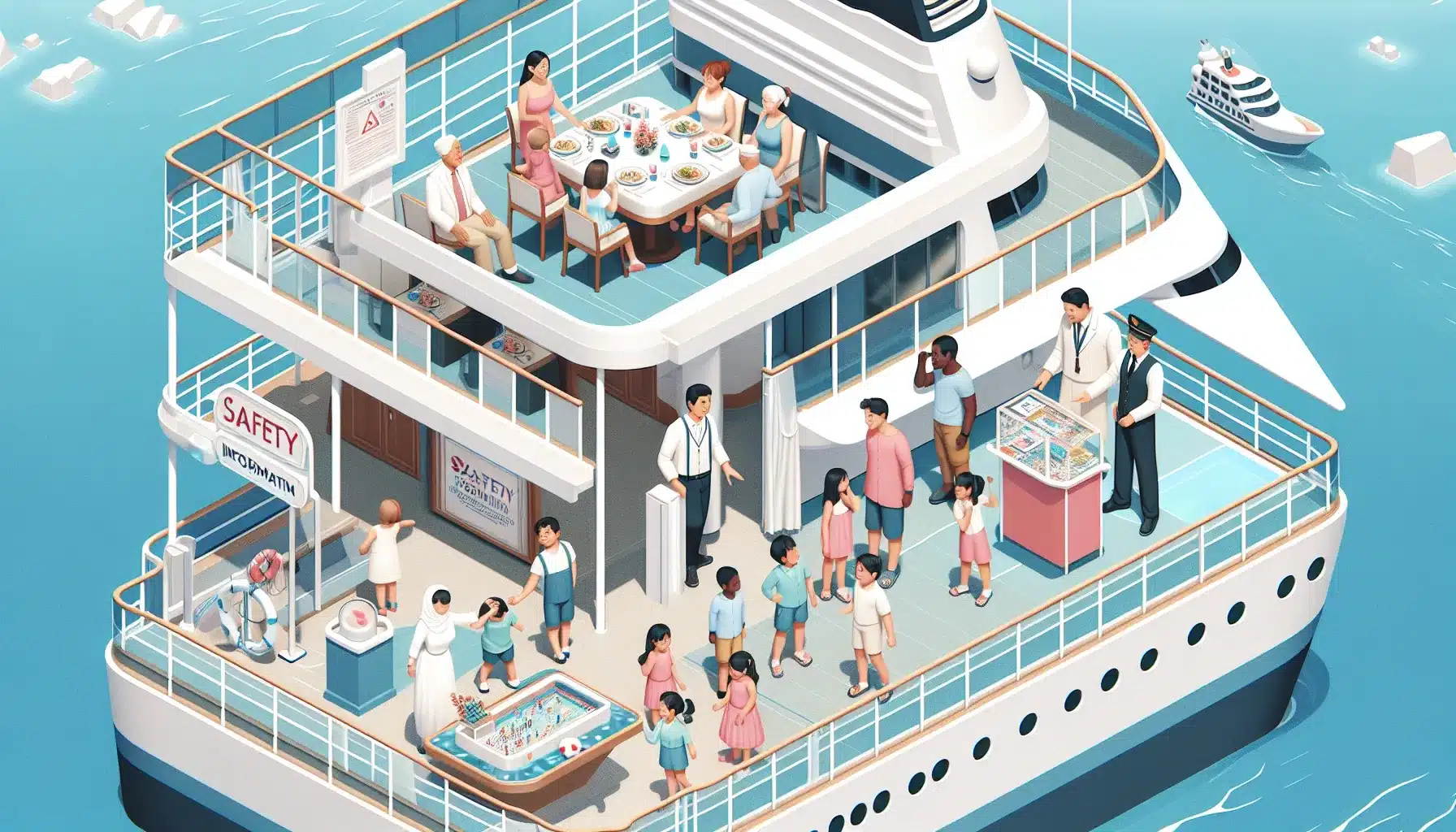Cruising is a popular choice for multi-generational travel, offering a diverse array of activities and experiences that can cater to every age group. From toddlers to grandparents, everyone can find something enjoyable on a cruise, making it an ideal setting for family reunions or holidays. However, ensuring the health and safety of both young children and elderly members during a cruise is paramount. This article will guide you through the health and safety protocols typically found on cruise ships, focusing on medical services and other important considerations to help you plan a safe and enjoyable journey.
Understanding Cruise Ship Medical Facilities
Modern cruise ships are well-equipped with medical facilities that can handle a range of medical issues, from minor ailments to more serious emergencies. These facilities are typically staffed by licensed physicians and nurses who are trained to deal with a variety of medical conditions, including those that may affect the elderly or the very young.
Medical centers on board are usually equipped with examination rooms, treatment rooms, and even isolation wards. Some ships also carry defibrillators, X-ray machines, and laboratory facilities that allow for basic testing. For families traveling with elderly members or young children, it’s important to inquire about the specific medical facilities available on your chosen cruise ship before booking.
Pre-Cruise Health Checks
Many cruise lines require a pre-cruise medical questionnaire to better understand the health needs of passengers. Families should take this opportunity to disclose any existing medical conditions or concerns about their children or elderly family members. This is also a good time to discuss any dietary restrictions or special accommodations that may be needed.
Vaccinations and Health Guidelines
With the advent of COVID-19, many cruise lines have implemented stringent health and safety measures, including requiring proof of vaccination for passengers. Families should keep abreast of the latest health guidelines from both the cruise line and health authorities to ensure compliance and safety. This includes vaccinations not only for COVID-19 but also for other communicable diseases like influenza, which can be particularly risky for young children and the elderly.
Onboard Safety Measures
Cruise lines have ramped up their health and safety protocols to include enhanced cleaning practices, air filtration systems, and social distancing measures. High-touch areas are regularly sanitized, and hand sanitizing stations are placed throughout the ship to encourage good hygiene.
For families, it’s crucial to instruct young children on the importance of handwashing and maintaining good hygiene practices. Additionally, families should familiarize themselves with the ship’s layout and identify the locations of medical facilities and emergency exits upon boarding.
Food Safety
Dining on a cruise ship is a highlight for many passengers, but it also poses potential risks, especially for those with food allergies or sensitivities. Cruise ships generally offer a variety of dining options and can accommodate special dietary needs. Families should communicate any food allergies or dietary restrictions to the dining staff upfront. Moreover, buffets, while popular, can be areas of concern in terms of food hygiene and safety, so it’s wise to supervise young children closely in these settings.
Activities and Accessibility
When traveling with young children or elderly family members, consider the accessibility of ship facilities and the suitability of onboard activities. Many ships offer children’s clubs and activities, which should adhere to safety standards, including proper supervision and age-appropriate activities.
For elderly travelers, mobility can be an issue, so checking the availability of accessibility services such as wheelchair access and lifts is crucial. Additionally, consider the physical demands of shore excursions and discuss with your travel agent or the cruise line whether specific excursions are suitable for your family members.
Emergency Procedures
Familiarize your family with the ship’s emergency procedures. Most cruises will conduct a mandatory safety drill, which includes instructions on how to wear life jackets and where to assemble in case of an emergency. Make sure that everyone, especially children and the elderly, understands what to do and where to go in case of an emergency.
Travel Insurance
Investing in comprehensive travel insurance that covers medical issues, trip cancellations, and emergencies is highly recommended, especially when traveling with vulnerable groups like young children or the elderly. Check that the policy covers specific activities planned during the cruise and any pre-existing conditions that family members may have.
Final Thoughts
Cruising with a multi-generational family can be a rewarding experience, offering something for everyone. However, the key to a successful trip lies in meticulous planning, especially when it comes to health and safety. By understanding and preparing for the medical and safety aspects of cruise travel, families can ensure a safe, enjoyable journey for all members, from the youngest to the oldest.
With careful preparation and attention to detail, your multi-generational cruise can be a memorable adventure that your family will cherish for years to come.
